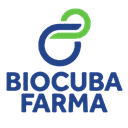Executive Secretary

VIII Simposio Internacional de Química y Ciencias Farmacéuticas
STA
V Simposio Internacional “Seguridad Tecnológica y Ambiental”
Resumen
• Problemática: Los aceites vegetales se han convertido en una alternativa a los minerales debido a su naturaleza biodegradable. La Artemia es uno de los biomodelos más empleado para evaluar la toxicidad de compuestos tóxicos. La ausencia de reportes de la ecotoxicidad de aceites y lubricantes obtenidos en Cuba hasta el momento, y en específico de derivados oleosos de Jatropha curcas
• Objetivo(s): Determinar la ecotoxicidad en Artemia sp. de dos productos derivados del aceite de Jatropha curcas.
• Metodología: Los nauplios de Artemia sp. fueron obtenidos por eclosión en Agua de Mar Artificial (AMA). El aceite fue disuelto en dimetilsulfóxido (DMSO) y luego en AMA. El método de administración de las sustancias (biodiesel y biolubricante 100cSt) fue por aplicación en el medio, 10 nauplios por placa. Se probaron 5 concentraciones en cada caso, aplicadas de manera única, al comienzo del ensayo, cuyo tiempo de duración fue 24 horas y luego se contó el número de Artemias muertas.
• Resultados y discusión: A través del Método de Análisis “Probit” se determina la Concentración Letal Media (CL5024h) resultando CL5024h=113.759ppm y CL5024h=75.115ppm para el biodiesel y el biolubricante (100cSt) respectivamente. Clasifican según sus CL5024h el biodiesel como moderadamente tóxico y el lubricante muy tóxico.
• Conclusiones: Durante la investigación desarrollada según la Concentración Letal Media a las 24 horas, de cada producto, resulta más tóxico el biolubricante y se presenta un nuevo reporte para este modelo biológico.
Abstract
Problem: Vegetable oils have become an alternative to minerals due to their biodegradable nature. Artemia is one of the most used biomodels to evaluate the toxicity of toxic compounds. The absence of reports on the ecotoxicity of oils and lubricants obtained in Cuba up to now, and specifically of oily derivatives of Jatropha curcas
• Objective(s): To determine the ecotoxicity in Artemia sp. of two products derived from Jatropha curcas oil.
• Methodology: Artemia sp. they were obtained by hatching in Artificial Sea Water (AMA). The oil was dissolved in dimethyl sulfoxide (DMSO) and then AMA. The method of administration of the substances (biodiesel and 100cSt biolubricant) was by application in the medium, 10 nauplii per plate. 5 concentrations were tested in each case, applied in a unique way, at the beginning of the test, whose duration was 24 hours and then the number of dead Artemias was counted.
• Results and discussion: Through the "Probit" Analysis Method, the Median Lethal Concentration (CL5024h) is determined, resulting in CL5024h=113.759ppm and CL5024h=75.115ppm for biodiesel and biolubricant (100cSt) respectively. According to their CL5024h, biodiesel is classified as moderately toxic and lubricant is highly toxic.
• Conclusions: During the investigation carried out according to the Median Lethal Concentration at 24 hours, of each product, the biolubricant is more toxic and a new report is presented for this biological model.
Sobre el ponente

Carmen Gloria Dean Galán

Discussion




